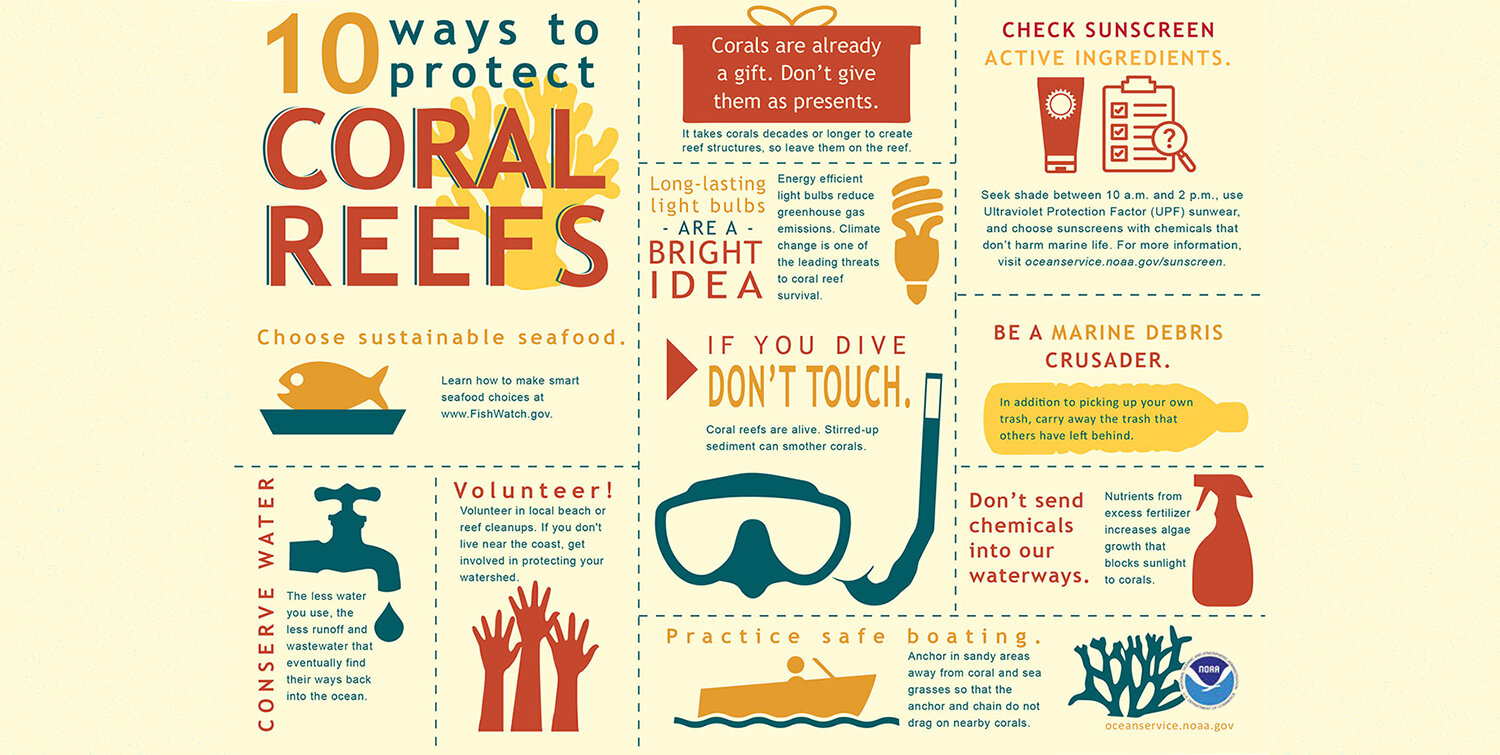Save the Waves for Coral Reef Awareness Week
Save the Waves for Coral Reef Awareness Week
Written by Kristine Manganelli (Somerset County 4-H Coordinator)
Coral Reef Awareness Week started July 25 and runs through tomorrow August 1, 2020. A whole week is devoted to coral reefs because they are one of the most diverse and important elements of Earth’s ecosystem. With an infinite variety of colors, shapes, and textures, they are visually breathtaking. If you’ve ever had the privilege to snorkel or scuba dive, perhaps you’d agree that the experience is other-worldly. Under water you cannot hear the noises above, and it feels like floating through a peaceful timeless atmosphere.
Not only is the coral itself beautiful, but the sea creatures that swim by are equally colorful and unique. There are over 800 species of hard coral reefs that are habitat for over 4,000 species of fish and hundreds of other species including lobsters, clams, seahorses, sea sponges, and sea turtles. It is estimated that there are millions of undiscovered species that live in or around coral reefs. This makes coral reefs critical to the health of the ocean, and ultimately the health of our planet.
In addition to providing habitat, coral reefs also serve as a barrier for coastal areas. Without coral reefs as a buffer, shorelines would be less protected from waves and storms that cause flooding, erosion, and property damage. This impacts the millions of people who live in these areas, but also wildlife that rely on the shoreline as habitat, like our friends the Piping Plovers.
Coral reefs are also important to our economy including the fishing, tourism, and recreation industries. It is estimated that the commercial value of coral reefs in the United States is $100 million. There are even discoveries made in coral reefs that lead to medical advances in treatments for illnesses like cancer and arthritis, as well as viral and bacterial infections and diseases.
All of this means that coral reefs are not only important to ocean life, but to human life as well. Unfortunately, the health of our coral reefs does not reflect this. Coral reefs face a number of threats including climate change, disease, pollution, habitat loss, and even sunscreen. That’s right, certain chemicals in common sunscreens harm a multitude of ocean life including green algae, mussels, sea urchins, fish, and dolphins.
Sunscreen chemicals accumulate in the tissue of coral reefs causing damage to its DNA, deformities in young coral, bleaching, and death. Bleaching causes the coral to turn white because the algae that lives on the coral leaves when it is stressed by pollutants. Coral and algae have a symbiotic relationship, where one species depends on the other to survive. Algae lives in the coral tissue, gives the coral its color, and feeds the coral. While bleaching does not kill coral, it takes away its main source of food, making it weak, stressed, and more vulnerable to death or disease.
While many of us use these products for our own protection, we may be unintentionally causing damage to the brilliant coral reefs that so many creatures rely on. Try choosing an alternative type of sunscreen that uses Zinc as its main component. There are other ways to protect yourself from the sun such as wearing a hat, long sleeves or rash guards, using umbrellas for shade, and avoiding the hours from 10am-2pm with the strongest sunlight.
To further understand the impact of Sunscreen Chemicals & Marine Life, explore this infographic from the National Oceanic and Atmospheric Administration (NOAA):
When you think of coral reefs, images of crystal clear water, white sand, and palm trees may come to mind, in places like Australia or the Florida Keys. Chances are you do not think of New Jersey as a place with reef habitat. You’d be partially correct in that assumption, as there are no native reefs located off our coasts. However, New Jersey is part of a program that boasts 17 Artificial Reefs located 2-25 nautical miles offshore from Sandy Hook to Cape May, a total of 25 square miles of sea floor.
Artificial reefs are heavy structures like old ships and barges, concrete debris, rock, obsolete army tanks and prefabricated concrete artificial reef units, that are intentionally placed on the sea floor in strategic designated sites. Artificial reefs are meant to serve the purpose that natural reefs serve; create barrier to protect the shorelines and create habitat for ocean life. In addition, it re-purposes and recycles these large objects that would otherwise end up in landfills.
Lobster Found Near NJ Artificial Reef
Artificial reefs provide hard surfaces where marine invertebrates such as blue mussels, oysters, barnacles, and corals attach. This draws lobster and fish such as seabass and blackfish to feed, and indirectly aids industry as these reefs are now being used by anglers and divers in search for these fish. In fact, one of my best friends dives these reefs in the summer for delicious lobster dinners and sent me the photo above.
While the official week of coral reef awareness is almost over, and summer is half-way through, there are actions you can take all year long. If you want to help with coral reef conservation efforts, take a look at the info-graphic below from NOAA:




